USS Pueblo (AGER-2) prior to becoming a spy ship
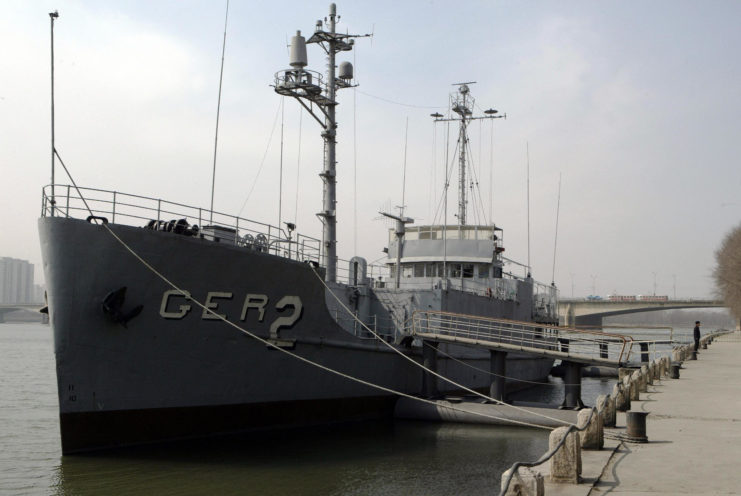
The Banner-class cargo ship FP-344/FS-344, initially commissioned by the US Army in 1944, began operations in April 1945 under the US Coast Guard’s direction. Throughout her service, she was dedicated to training civilians for Army duty, a role she faithfully fulfilled until her retirement in 1954.
More than a decade later, the vessel underwent numerous modifications and was renamed USS Pueblo, AKL-44. Her role transitioned to that of a light cargo carrier, and subsequent changes allowed her to serve as an environmental research platform under the AGER-2 designation.
USS Pueblo (AGER-2) is deployed to North Korea
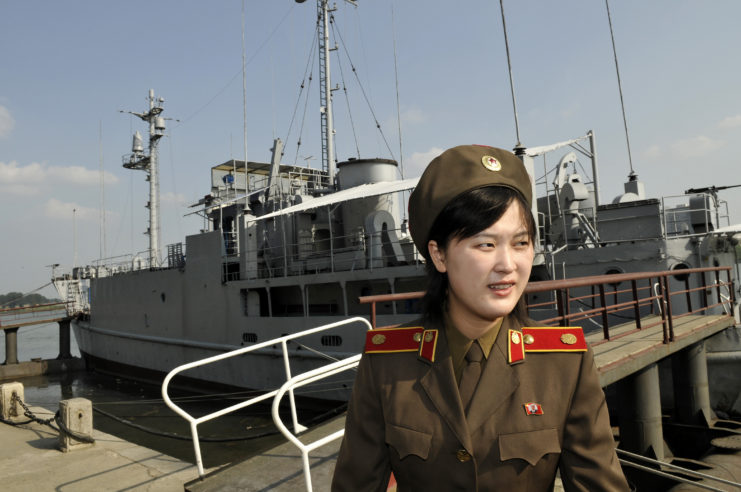
By 1967, the USS Pueblo had completed shakedown training and was prepared for her inaugural espionage mission. Departing on January 5, 1968, the ship’s mission was to collect intelligence on both North Korea and the Soviet Navy. Eleven days later, Pueblo reached the 42nd parallel, ready to patrol along the North Korean coast while maintaining a distance of at least 13 nautical miles from the shoreline.
On January 23, 1968, North Korea launched an attack on the Pueblo. Detected by a submarine chaser, the spy ship received an ultimatum to stand down or face fire. Attempting to turn away, Pueblo, being significantly slower than the North Korean vessel, couldn’t evade the threat.
Swiftly, the enemy submarine chaser was joined by four torpedo boats, an additional chaser and two Mikoyan-Gurevich MiG-21s. Armed with only a few handguns and a pair of M2 Brownings, Pueblo and her crew were ill-prepared for the assault. Nonetheless, they resisted allowing the North Koreans to board.
North Korea captures the USS Pueblo (AGER-2)
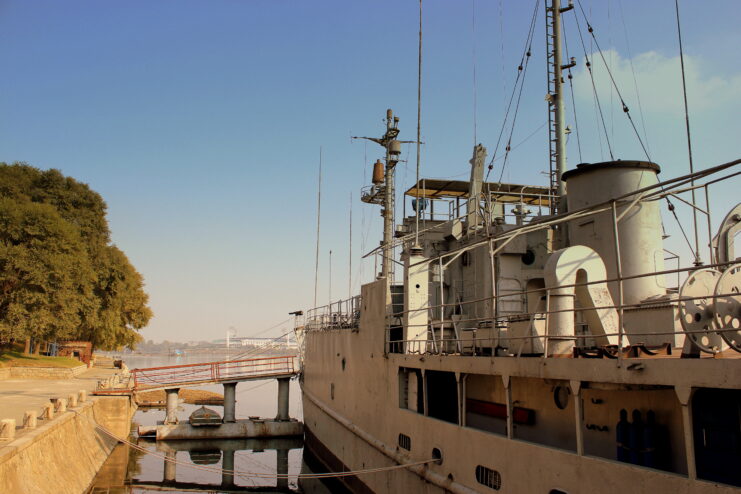
Upon arriving at the port city of Wonsan, the crew made every effort to destroy as much sensitive material as possible. Their attempts to dispose of top-secret documents led to the Pueblo‘s speed having to be slowed, which made them vulnerable to retaliation. The North Koreans responded with a 57 mm cannon and several machine guns, inflicting damage on the ship and resulting in the death of one of the 83 sailors, Duane Hodges. Additionally, two others, including US Marine Corps Sgt. Bob Chicca, sustained injuries from enemy fire.
Eventually, the North Koreans managed to board the vessel. Each crew member was blindfolded, had their hands bound, and endured physical abuse upon reaching the shore.
American sailors were held captive for months
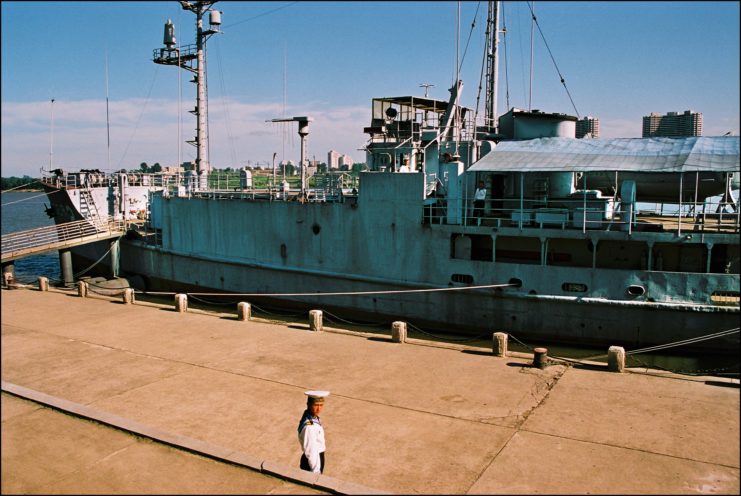
Signing the three A’s document

As aforementioned, the United States was embroiled in the Vietnam War at the time of USS Pueblo‘s capture. Concerned about the potential escalation of tensions with North Korea, American officials opted for a diplomatic solution to resolve the crisis. Nearly a year after the vessel’s seizure, both country’s reached a mutually satisfactory agreement, ensuring the safe return of her crew.
On December 23, 1968, US Army Maj. Gilbert Woodward signed a document known as the three A’s agreement, written by North Korean authorities. This agreement required the US acknowledge wrongdoing, issue an apology and commit to preventing similar incidents in the future.
Following this, the crewmen were released and returned to the US, while Pueblo remained under North Korean control. Initially showcased in Wonsan and Hŭngnam, the vessel was eventually relocated to the Victorious Fatherland Liberation War Museum in Pyongyang.
USS Pueblo (AGER-2) is still held captive
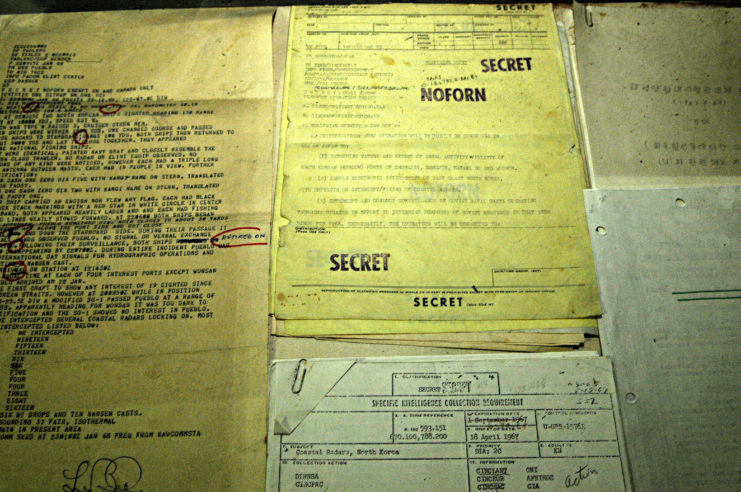
Upon capture by North Korea, the USS Pueblo was found to contain 10 encryption machines and thousands of highly classified documents, all of which were seized by the North Korean government. As such the incident stands as one of the most significant intelligence losses in modern history.
Although held in captivity, the US Navy maintains technical ownership of the spy ship, making her one of the service’s longest-serving vessels, as she remains officially active. Converted into a tourist attraction, the vessel undergoes routine maintenance, including a recent paint job commemorating the anniversary of the Korean War.
Are you a fan of all things ships and submarines? If so, subscribe to our Daily Warships newsletter!
Following former President Donald Trump’s designation of North Korea as a state sponsor of terrorism in 2017, survivors and families of deceased sailors from Pueblo seized the opportunity to sue the country under the Foreign Immunities Act. In 2021, they were granted $2.3 billion in compensation. However, the method or likelihood of receiving this compensation remains uncertain.
